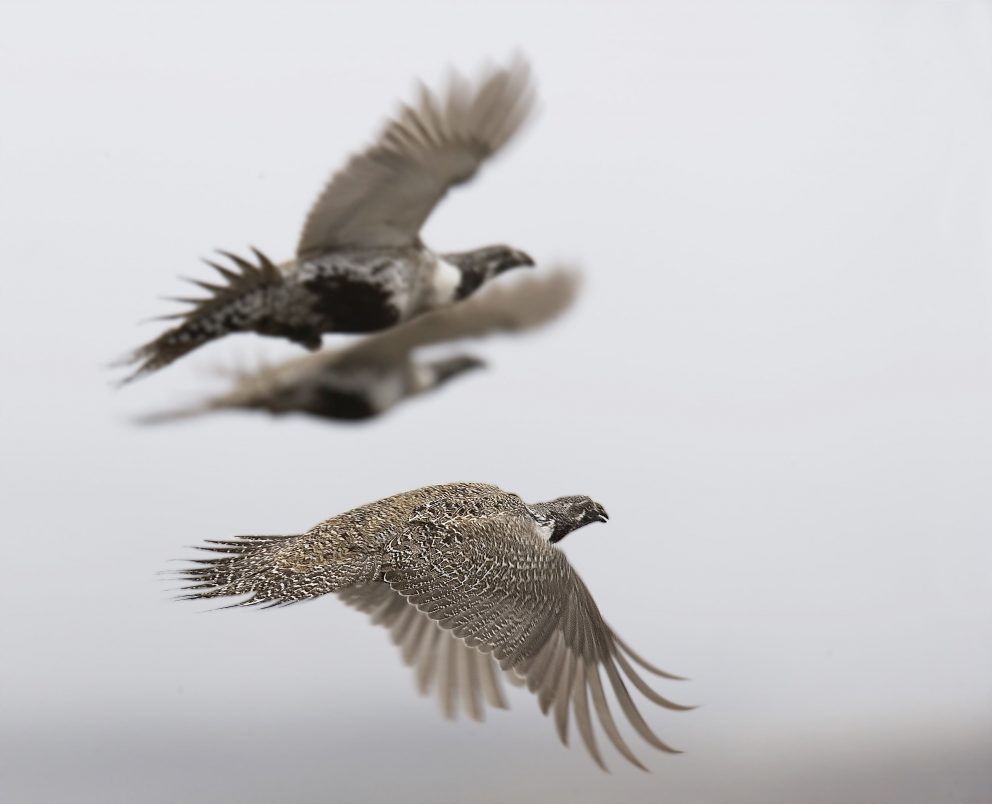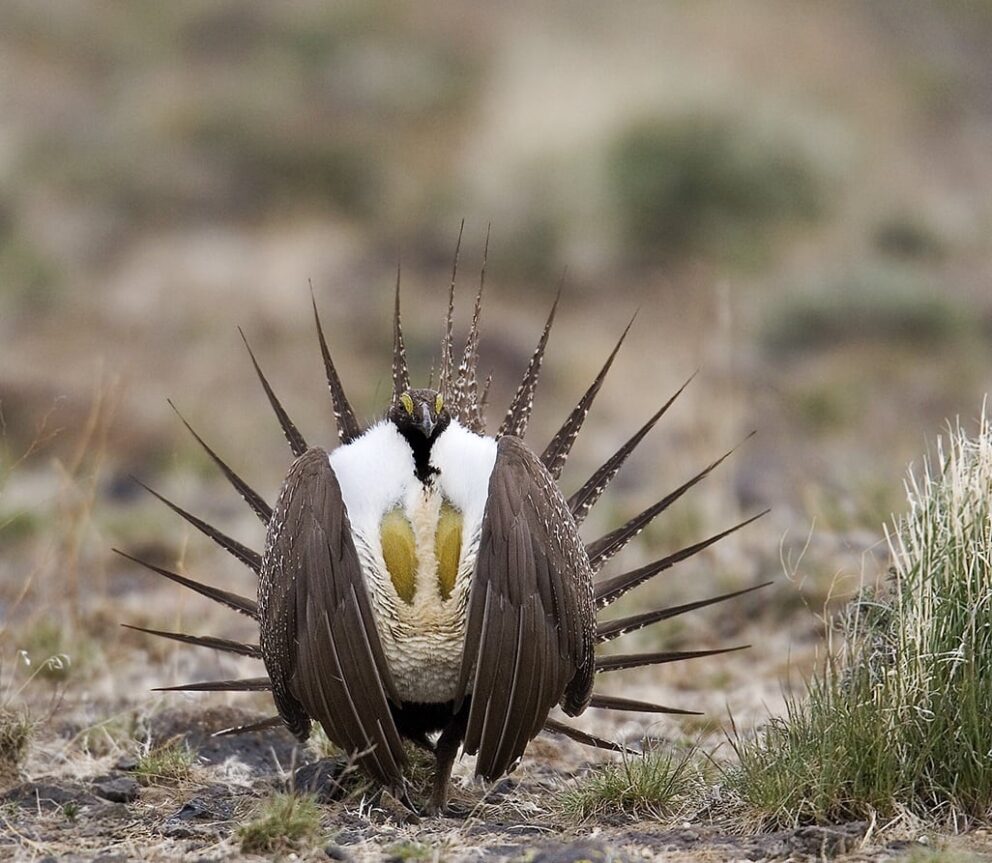- SCIENTIFIC NAME
- Centrocercus urophasianus
- CLASSIFICATION
- Bird
- LIFE SPAN
- 1-9 Years
- SIZE
- 22.1-29.5” | 3.08-6.4lbs
- STATE CONSERVATION STATUS
-
- Priority Species
- State Protected
- FEDERAL CONSERVATION STATUS
- Near Threatened
- GAME STATUS
- Game
- GAME TYPE
- Upland Game
- Washoe
- Humboldt
- Pershing
- Churchill
- Mineral
- Lyon
- Douglas
- Carson City
- Storey
- Elko
- Lander
- Eureka
- White Pine
- Esmeralda
- Nye
- Lincoln
- Clark
Habitat & Range
Sage-Grouse can be found among the sagebrush steppe in Nevada. They are considered to be a sagebrush obligate species, this means they need sagebrush for their overall survival.
- Cold desert shrubland and sagebrush
Threats
- Habitat Degradation - Due to Invasive Species
- Habitat Fragmentation
- Habitat Loss
Natural History
Greater Sage-Grouse males begin courtship rituals by inflating their air sacs and spreading their tail feathers. The sound emitted from the male’s booming display during courtship is heard loudest from the sides, so they will stand beside the females in an attempt to attract them, rather than in front of them. Upon mating, females will build their nest on the ground and lay one egg a day for up to nine days, averaging seven eggs in a clutch. They heavily depend on sagebrush for shelter and their main food source, along with leaves, flowers, and insects. Because they lack a strong gizzard, they are unable to consume hard seeds, resulting in having a soft diet.
Fun Facts














